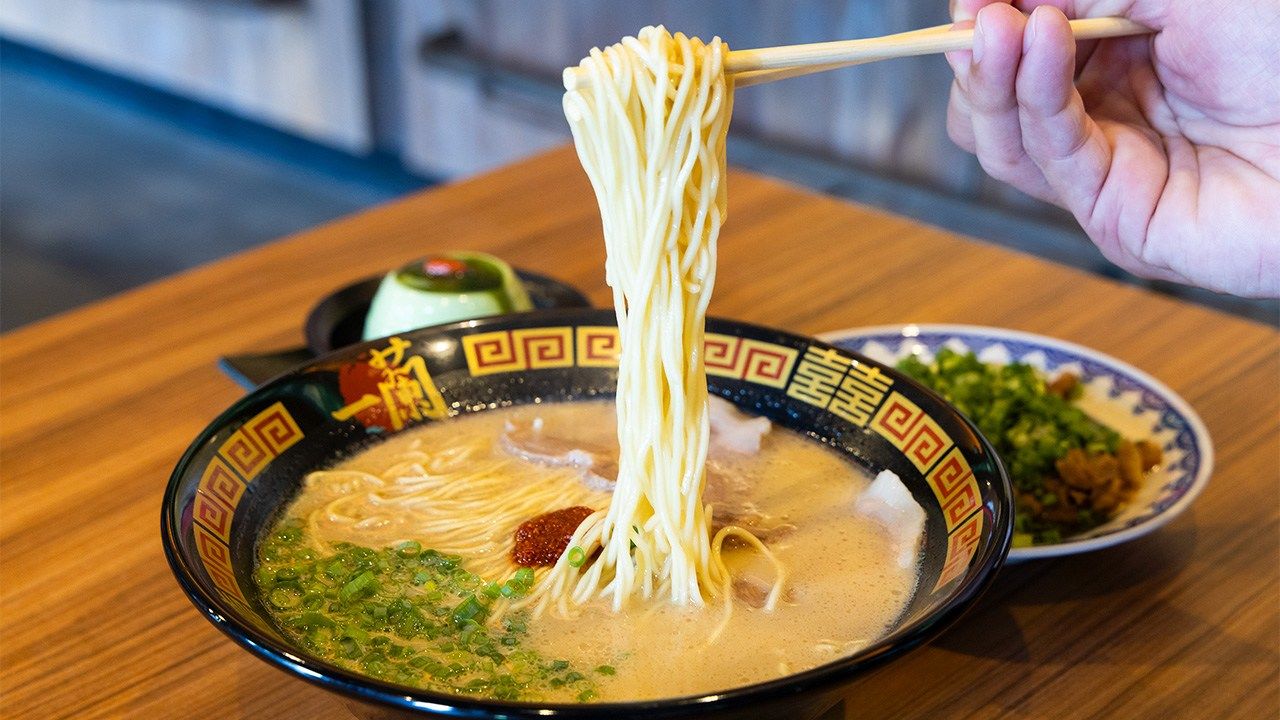
Fukuoka Soul Food: Exploring Ichiran Ramen’s Popularity
Guideto Japan
Food and Drink Culture Travel- English
- 日本語
- 简体字
- 繁體字
- Français
- Español
- العربية
- Русский
International Ramen Fans Seeking Ichiran Origins
While Japanese cuisine in general is in the middle of an unprecedented international boom, ramen has surpassed sushi as the dish inbound tourists seek most in Japan. It is a dish showing uniquely Japanese development that people can enjoy for a reasonable price. Even the priciest offerings at the most popular shops rarely surpass ¥2,000, with bowls piled in char siu pork, scallions, and flavored boiled eggs, while there are still old-fashioned chains serving up bowls for less than ¥500.
One ramen chain in particular has become an overwhelming favorite of international tourists: Ichiran, which serves tonkotsu (pork bone broth) ramen. The chain has long been loved by ramen fans across gender and generation for its firmly textured noodles and rich, easy-slurping broth. Another secret to its success is its unique “indirect” service. Customers buy meal tickets from a machine and take one of the individually partitioned counter seats the company calls “ramen focus booths.” They then write out their preferred customization options on an order sheet and hand it over the counter. The ramen, sides, and kaedama noodle refills are all passed beneath a bamboo screen so customers rarely, if ever, get even a glimpse of the staff. It is an atmosphere designed to allow customers to ignore the world around them, relax, and focus on savoring the flavor more deeply.
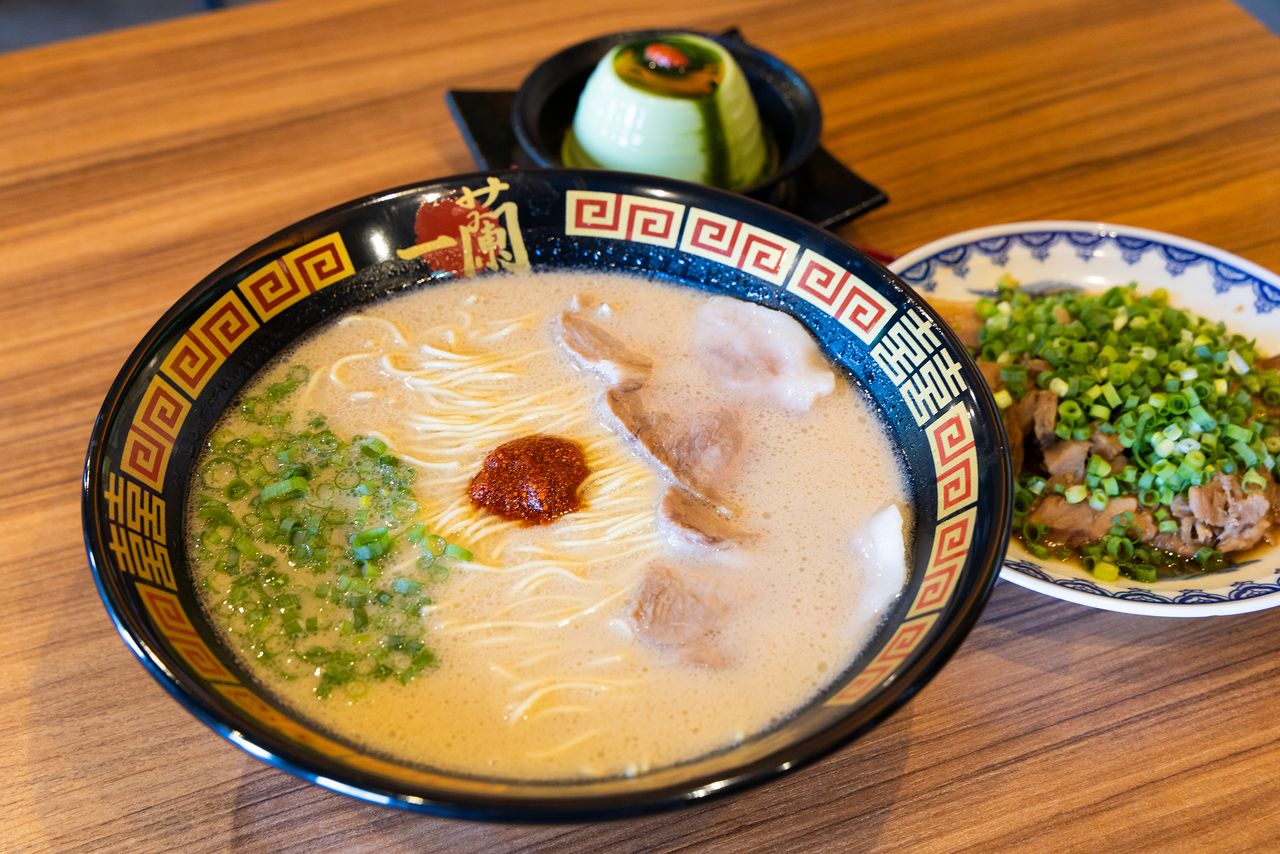
Ichiran ramen comes served with a spoonful of “original spicy red sauce” floating in the center. (© Nippon.com)
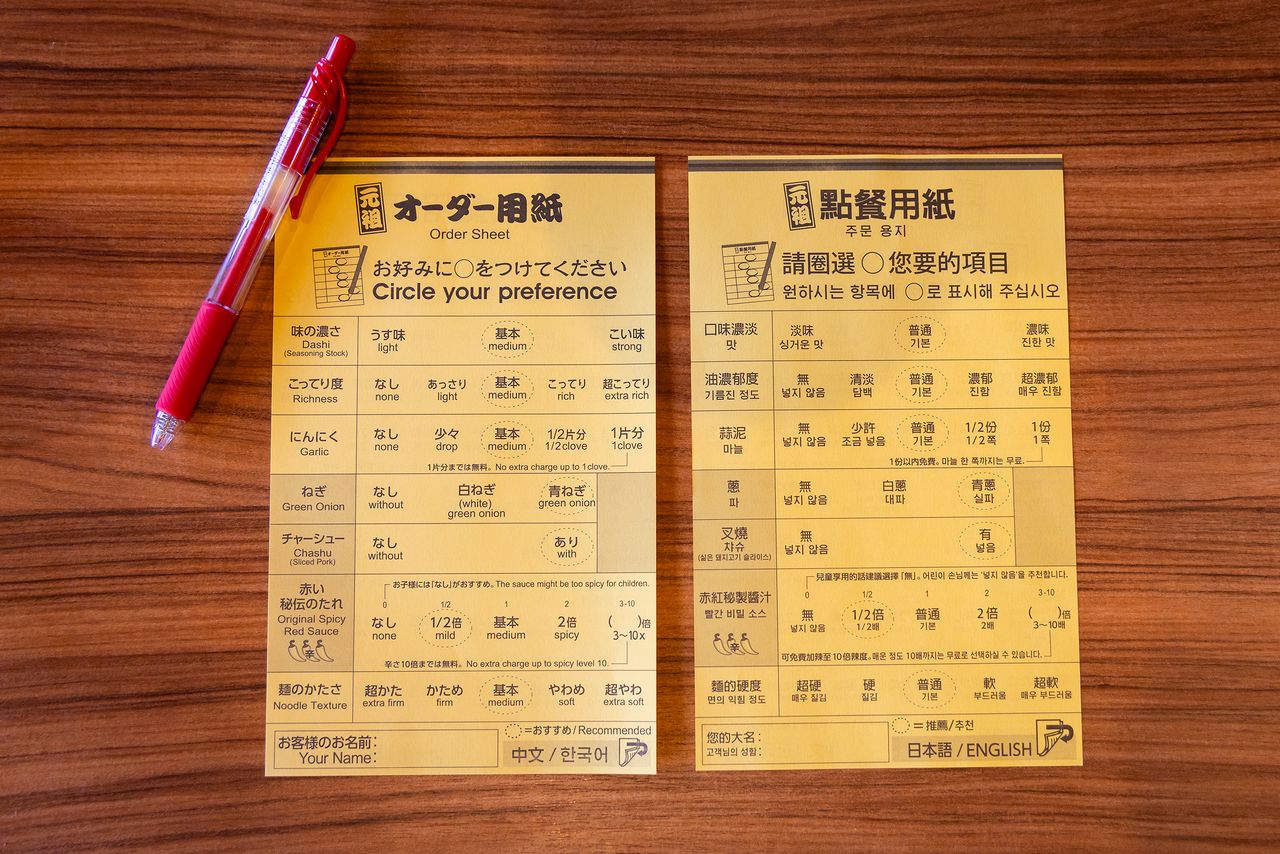
The order sheet allows detailed customization by adjusting the broth richness and topping selection. Sheets include four languages: Japanese, English, Chinese, and Korean. (© Nippon.com)
The flavor is habit forming, and there are more than a few people who make a pilgrimage tp the Ichiran Honsha Sōhonten, the main shop at the company headquarters, a part of every visit to Fukuoka.
More recently, the Ichiran no Mori Itoshima facility in western Fukuoka Prefecture has become a must-visit for fans. This is the company’s central production facility, home to the Tonkotsu Ramen Museum, as well as a selection of shops filled with retro atmosphere.
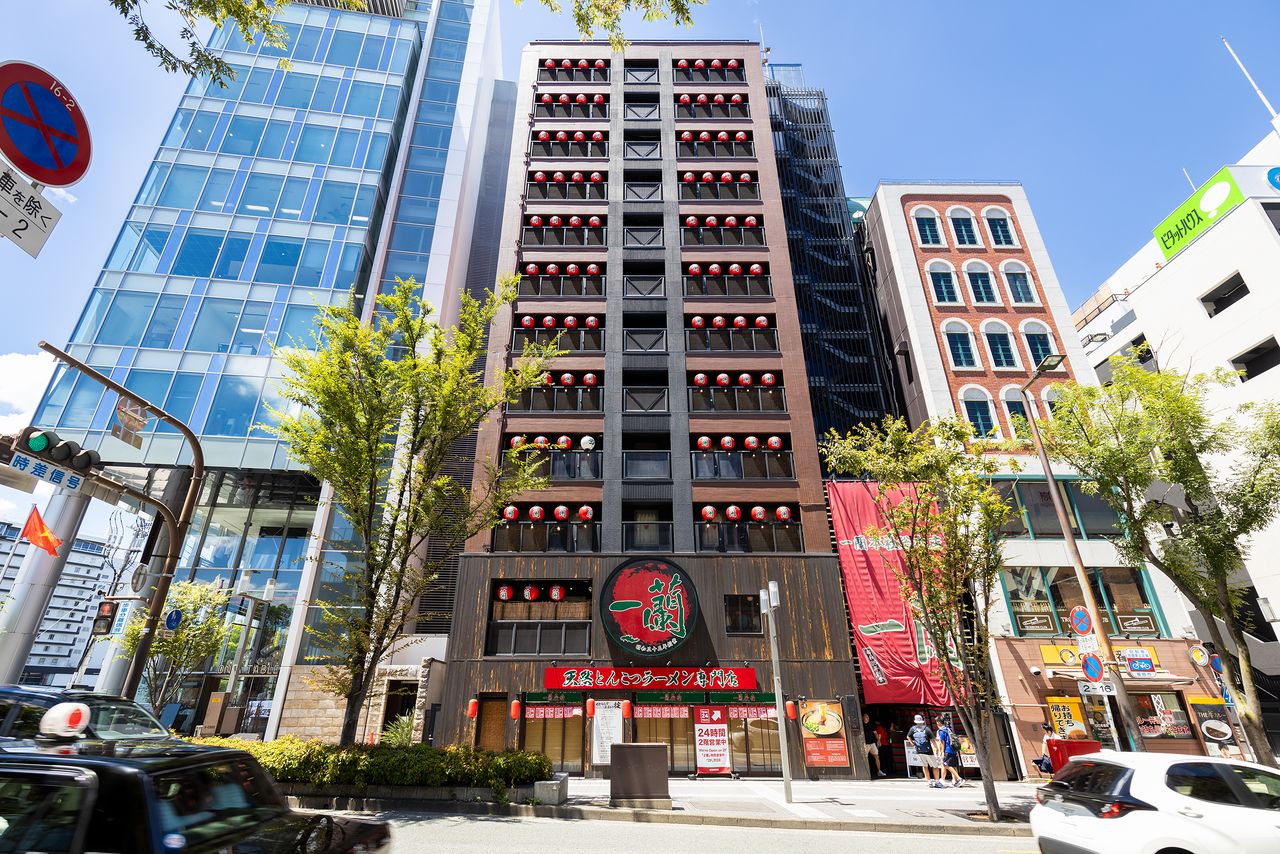
The Ichiran Honsha Sōhonten building is lined with chōchin paper lanterns to the very top. (© Nippon.com)
A Vast Facility
The Itoshima peninsula is packed with seaside resorts, and Ichiran added its own attraction in 2014 when it opened the facility Ichiran no Mori as its central production hub. The clean water and air born of its verdant natural surroundings add to the subtly balanced flavor of its broth and noodles.
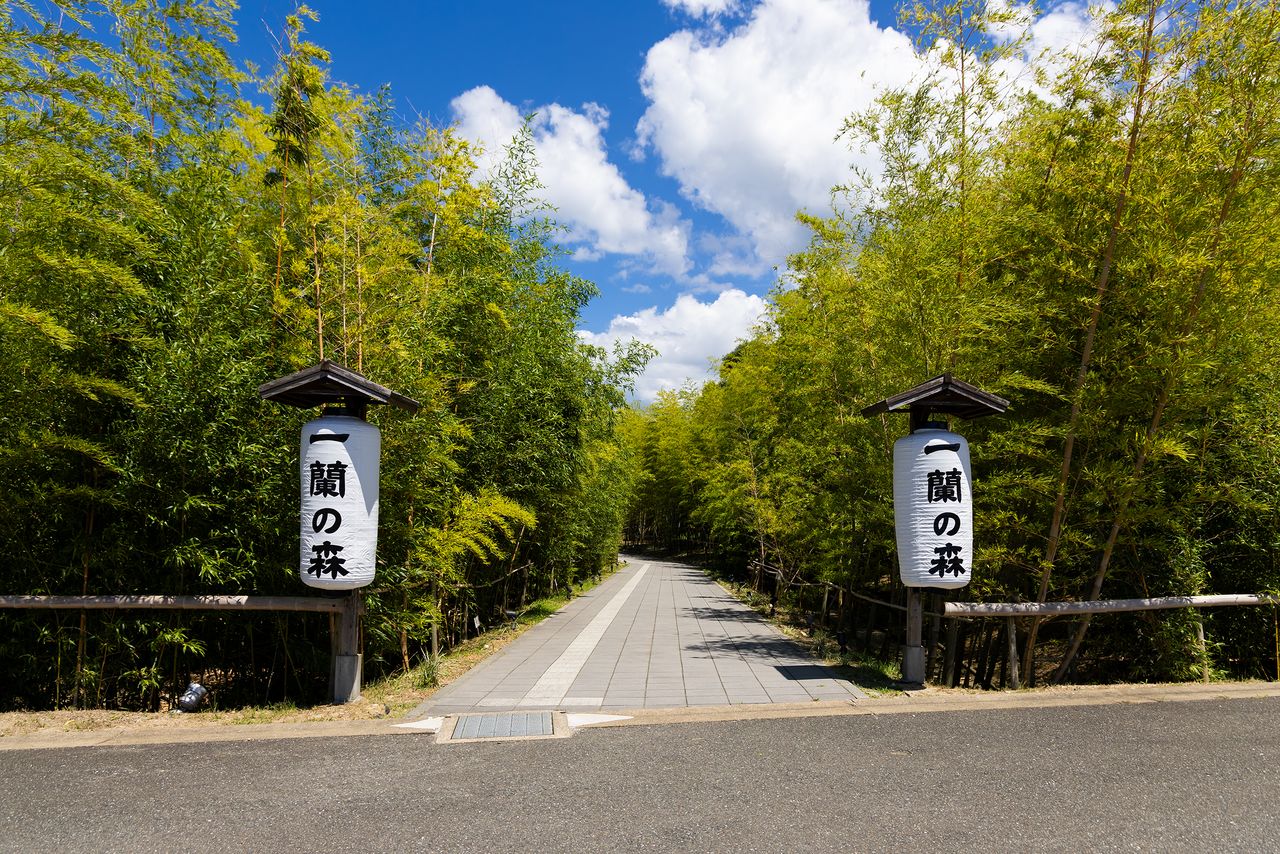
The entrance to tourist hotspot Ichiran no Mori. (© Nippon.com)
The vast facility spreads over 90,000 square meters. As I walk along its narrow paths through a quiet, bamboo embraced surroundings, the appetizing smell of tonkotsu broth entices me along. Then, the view opens up to reveal a building adorned with a massive Ichiran logo.
Suppressing the urge to immediately enjoy a bowl, I walk further along the paths enjoying the scenery. The recommended course is to take a tour of the production facility and museum before visiting the ramen and souvenir shops.
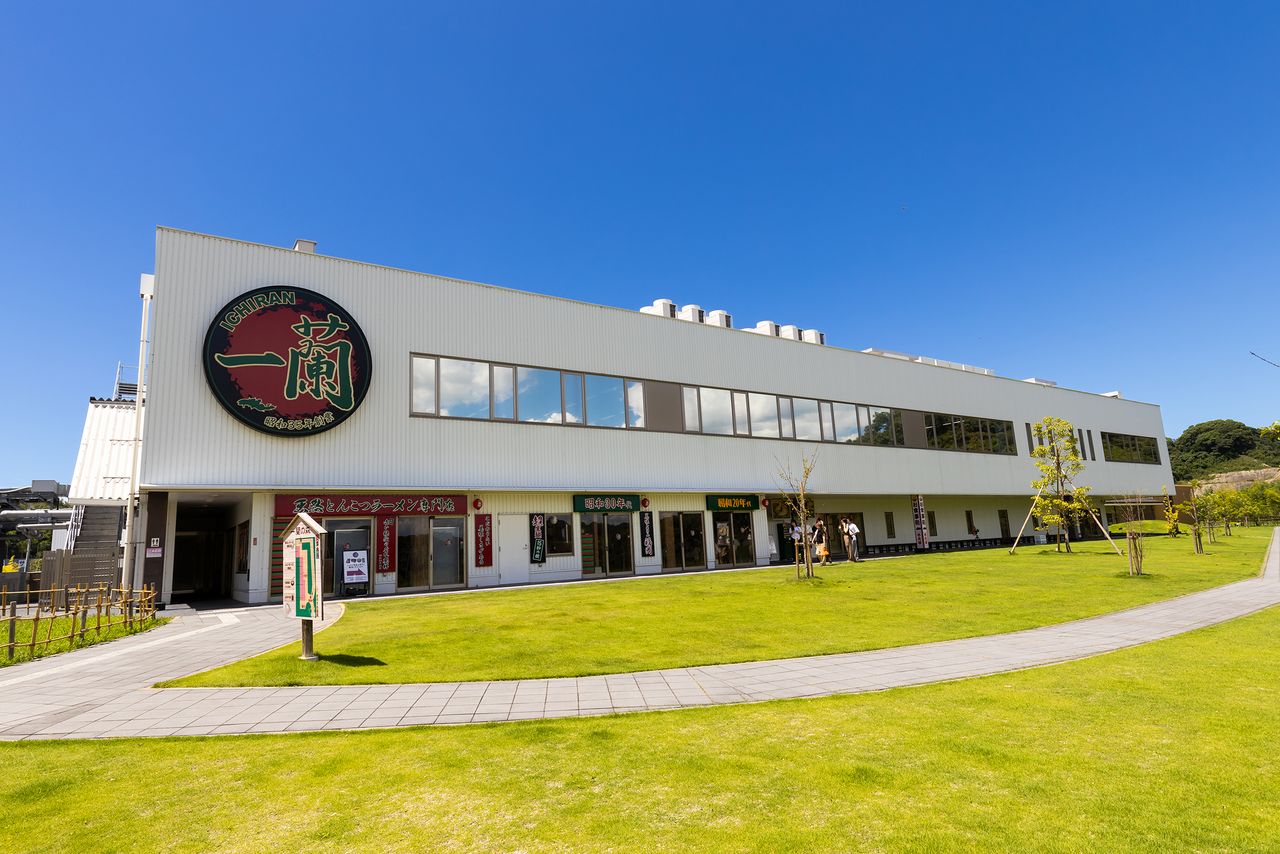
The Ichiran no Mori building. On the left is the shopping area, while the museum and factory are at the back right. (© Nippon.com)
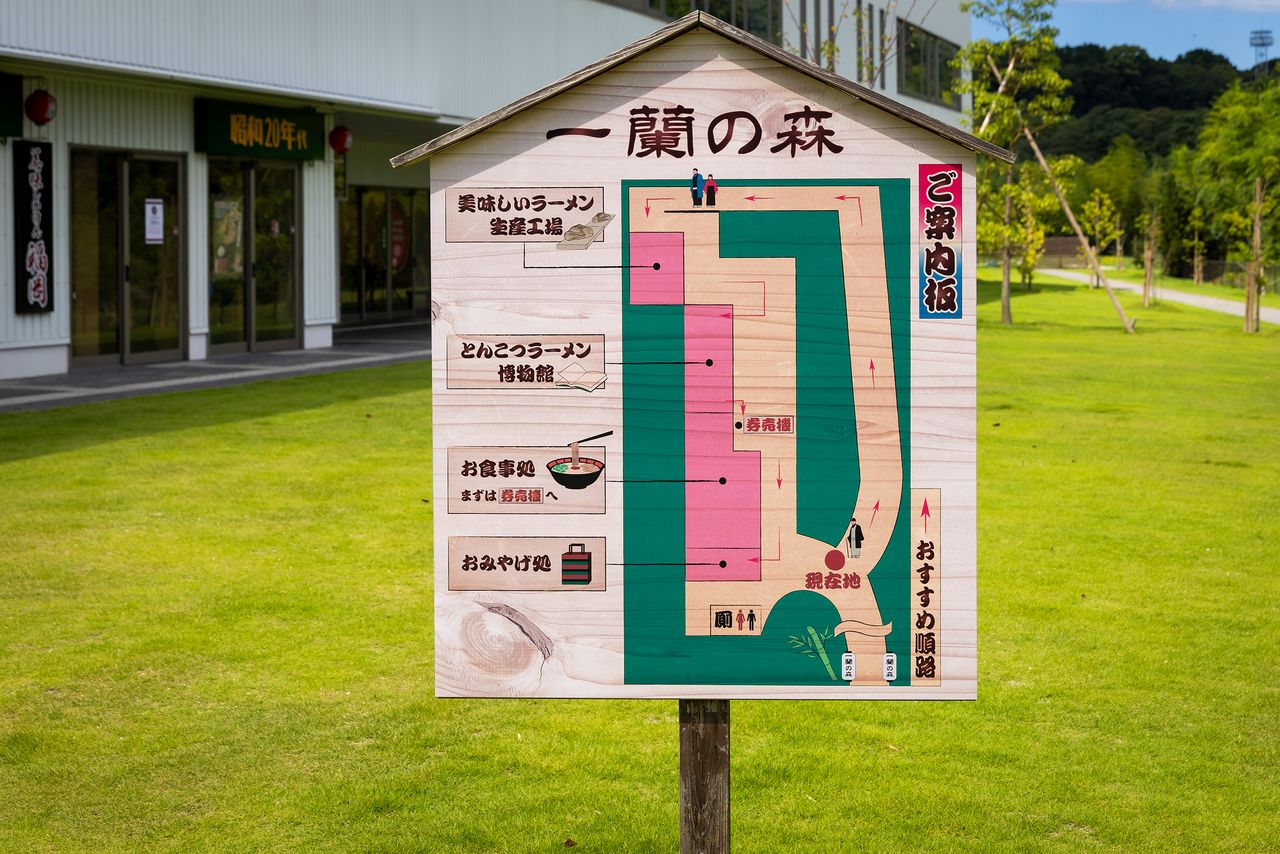
Be sure to follow the recommended course indicated on the guideposts. (© Nippon.com)
A Glimpse of the Secrets to Success
First is the production facility where the company makes its noodles and broth. Ichiran has shops across Japan, from Hokkaidō to Okinawa, as well as overseas in New York, Hong Kong, and Taiwan. The keys to its characteristic flavor, the “secret red sauce” and umami-packed dashi, for every one of those branches ares made right here in Itoshima. And on top of that, the recipes for those two are kept top secret, known in full only to Ichiran’s CEO and three specialists.
To protect the company’s flavor secrets, only limited sections of the noodle production facility are revealed through glass. Even so, wall panels describe the process in detail, making them a must-see for Ichiran fans.
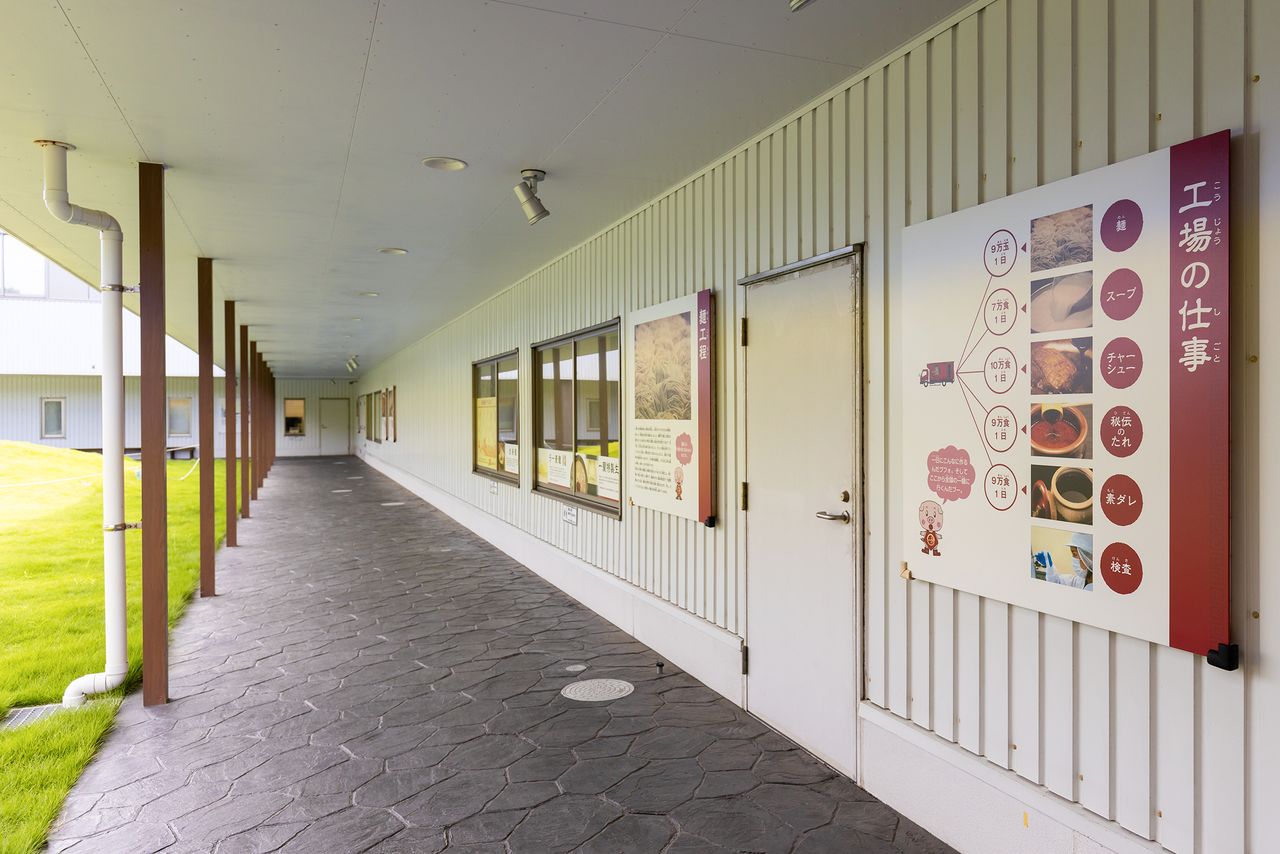
Ichiran’s production is known for strict quality control. The central glass windows offer a glimpse of the action. (© Nippon.com)
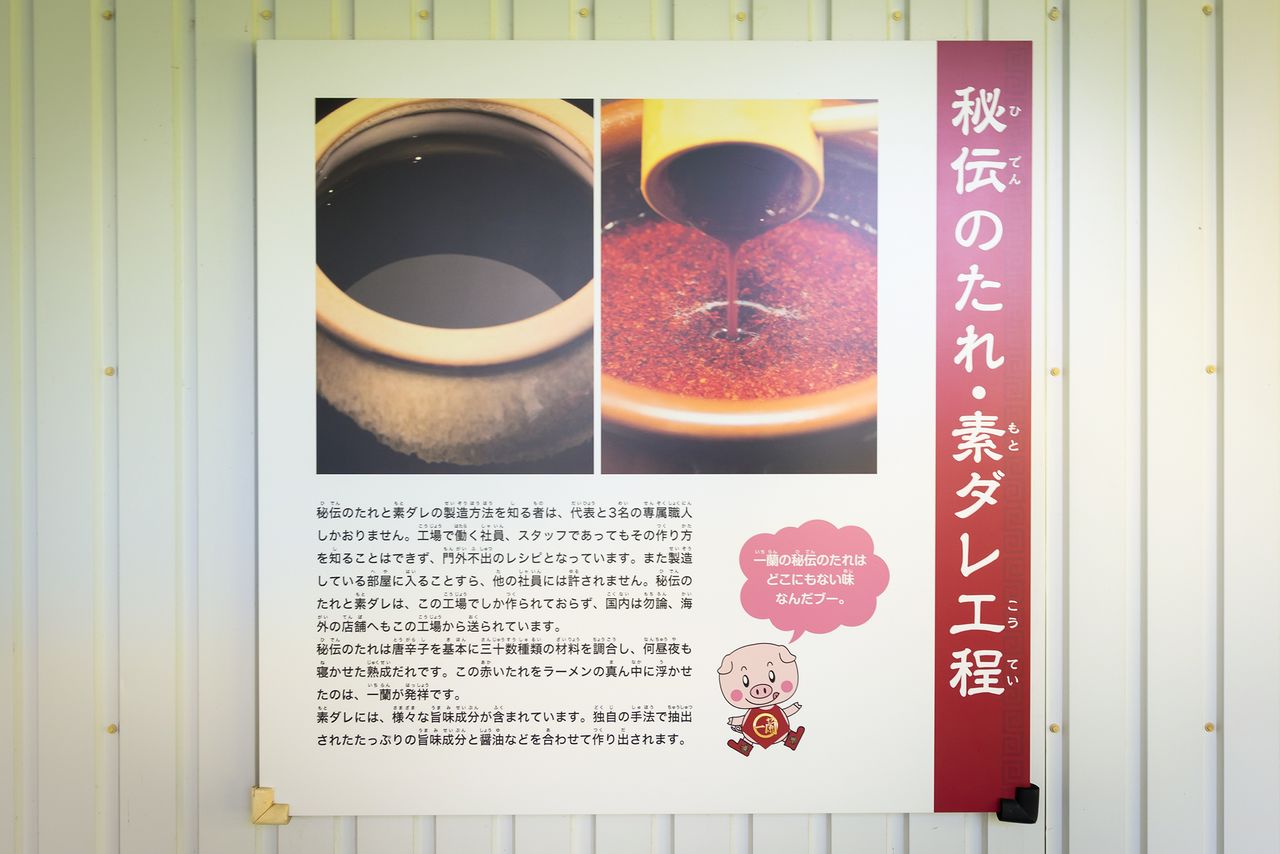
Recent years have seen an increase in shops serving ramen with a dab of chili-based sauce floating in the middle, but Ichiran is the original. (© Nippon.com)
Next up is the Tonkotsu Ramen Museum. Naturally, it describes the history of the Fukuoka original style, but many of its displays are packed with Ichiran’s unique obsession to detail, with everything from preparation processes, serving system, and research work.
Most Ichiran shops prevent any view of the preparation area, so even a glimpse at the cooking utensils is a priceless experience. The “ramen focus booth” displays gives a view behind the screen, letting visitors enjoy what usually only the staff can see, and has become a favorite photo spot. Above all, Ichiran’s efforts to live up to its self-applied title as the “world’s leading expert” in the field of tonkotsu ramen are enough to convince all those who ever dismissed the dish as simple noodles.
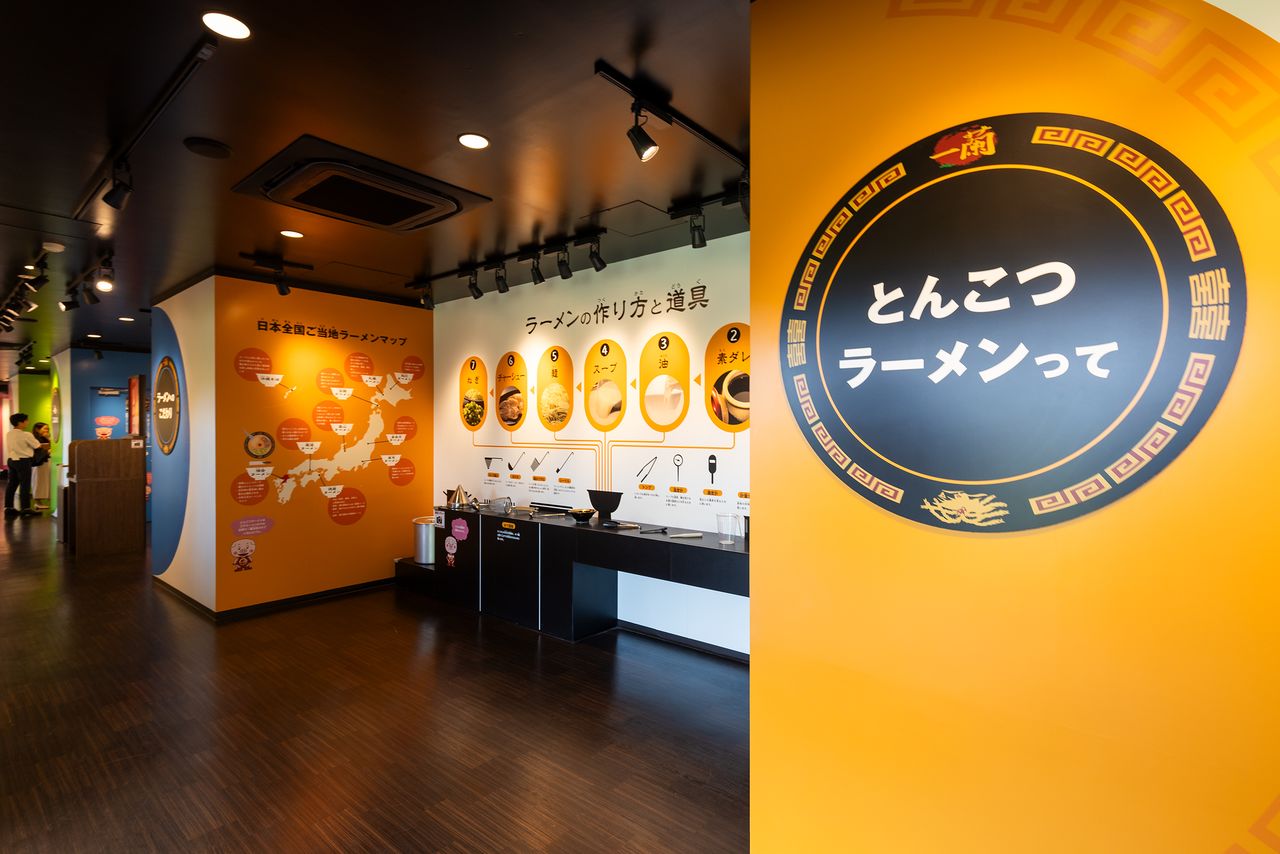
The Tonkotsu Ramen Museum displays rarely-seen preparation methods and tools. (© Nippon.com)
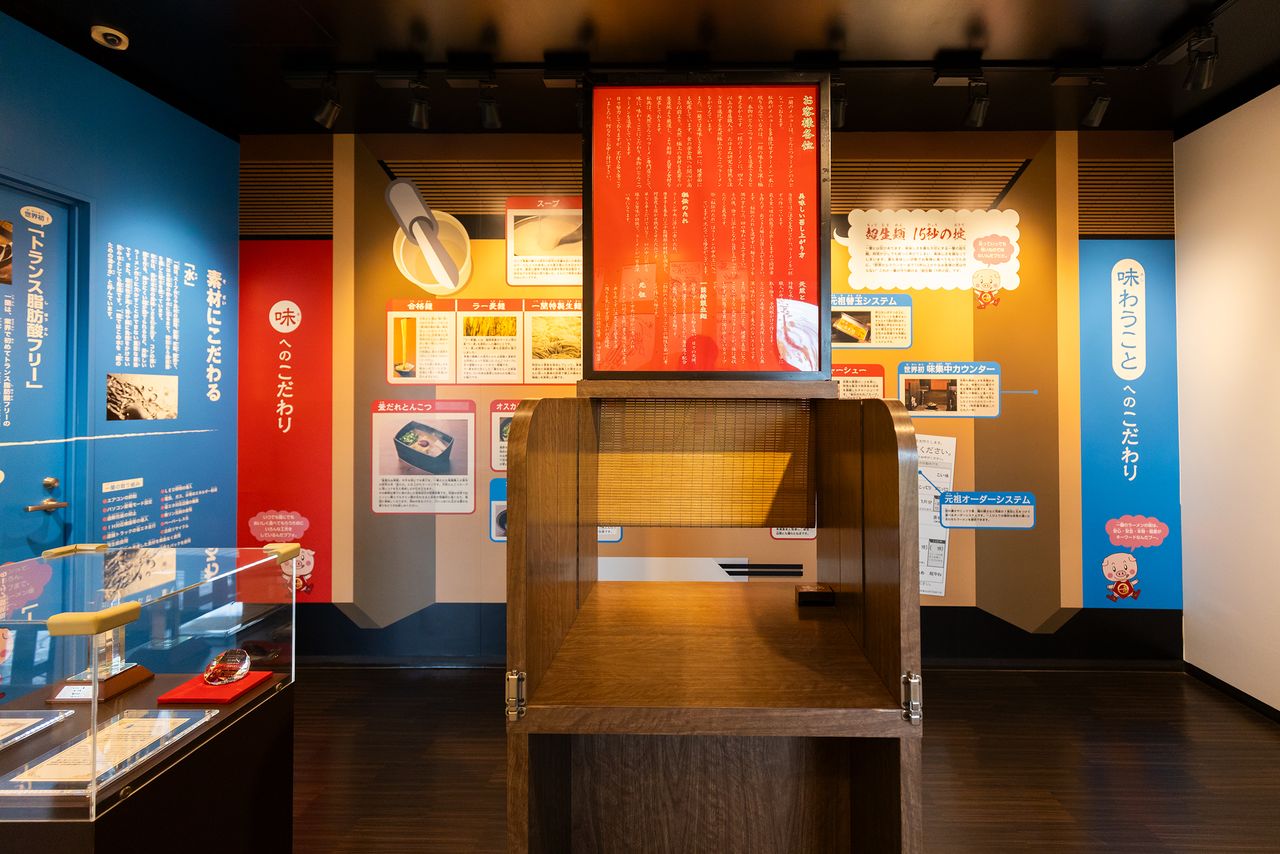
A sample “ramen focus booth” is free to photograph from all angles. (© Nippon.com)
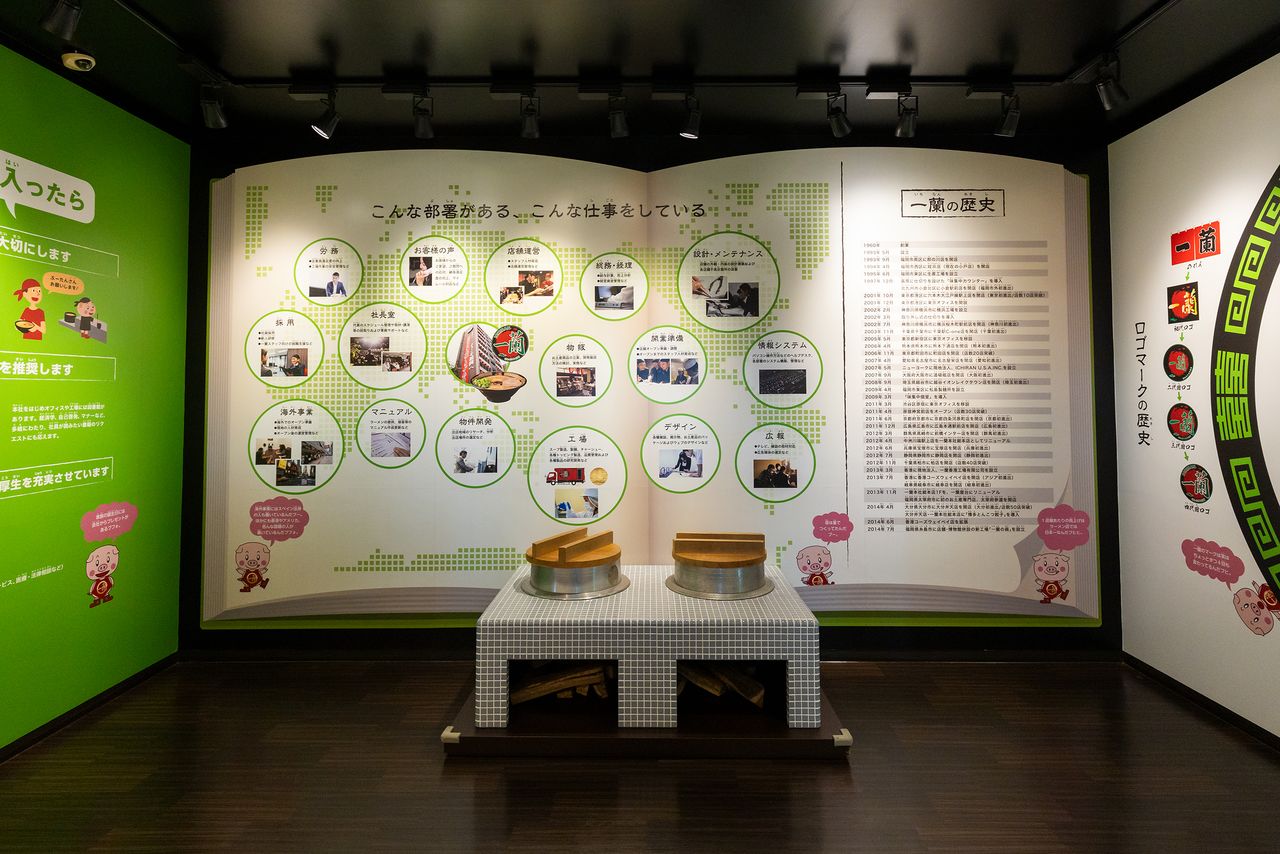
The panels describing Ichiran’s history and R&D work are well worth reading. (© Nippon.com)
One-of-a-Kind Ramen Restaurants
Finally, it was time to eat. The shops are modeled on the retro Shōwa era (1926-1989), with sections for each 10-year span of the period. Each area is decorated with pictures of the Hakata streets from that time, adding to the retro charm. In addition to the booth-style seating, there are also areas mimicking yatai street stalls and family-friendly tables, so you can enjoy your Ichiran flavor in a variety of different atmospheres.
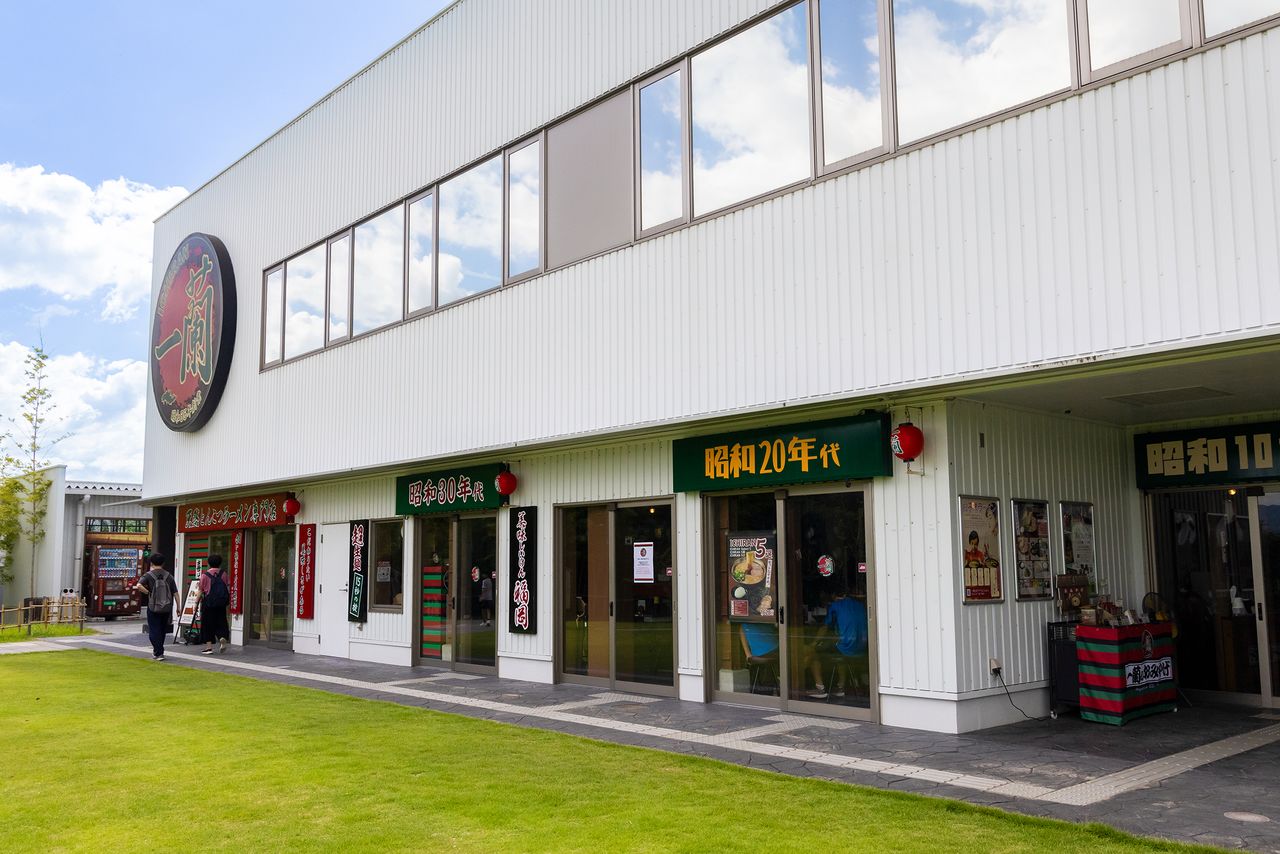
The shopping area. The leftmost section is a souvenir shop. (© Nippon.com)
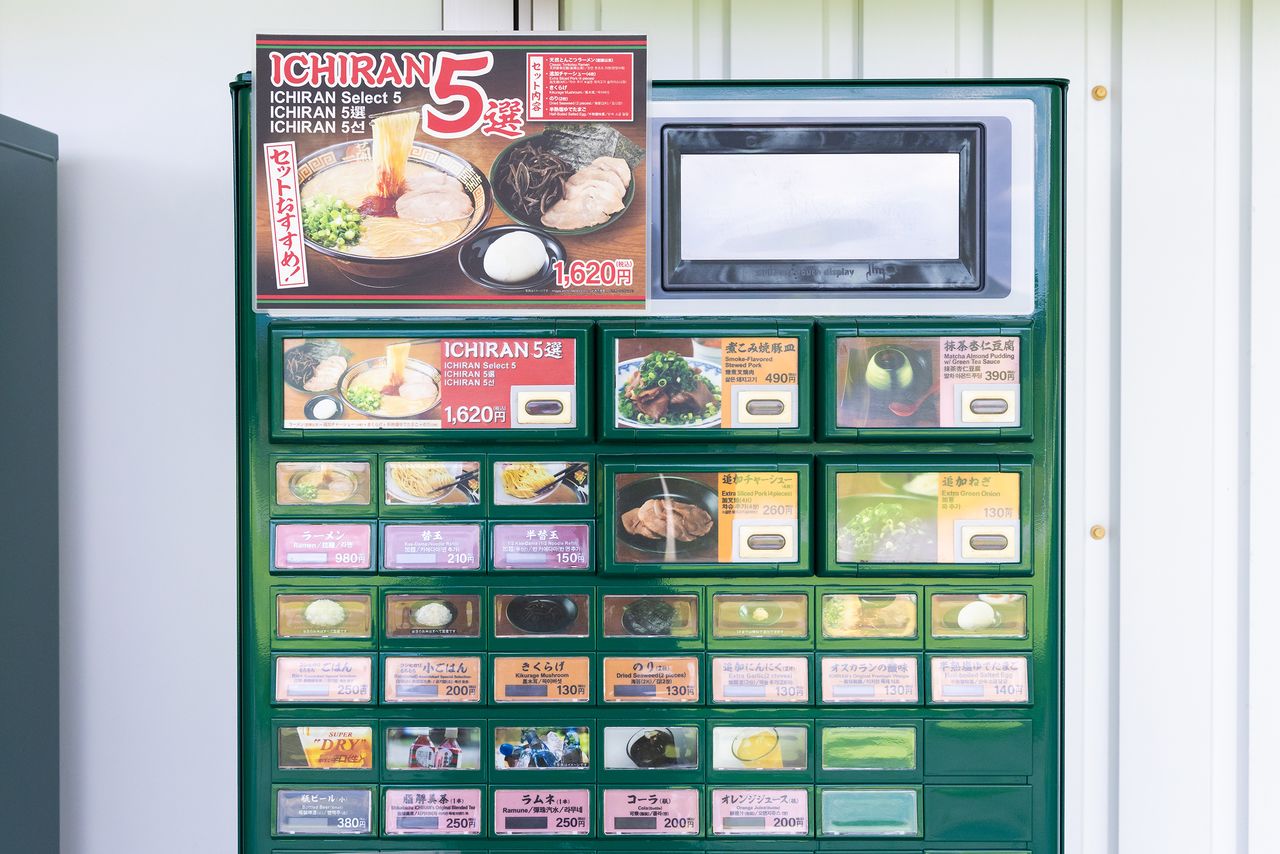
The usual Ichiran ticket machine. The Ichiran Select 5 bowl, with added char siu, wood ear mushrooms, nori seaweed, and soft-boiled salted egg, is highly recommended. (© Nippon.com)
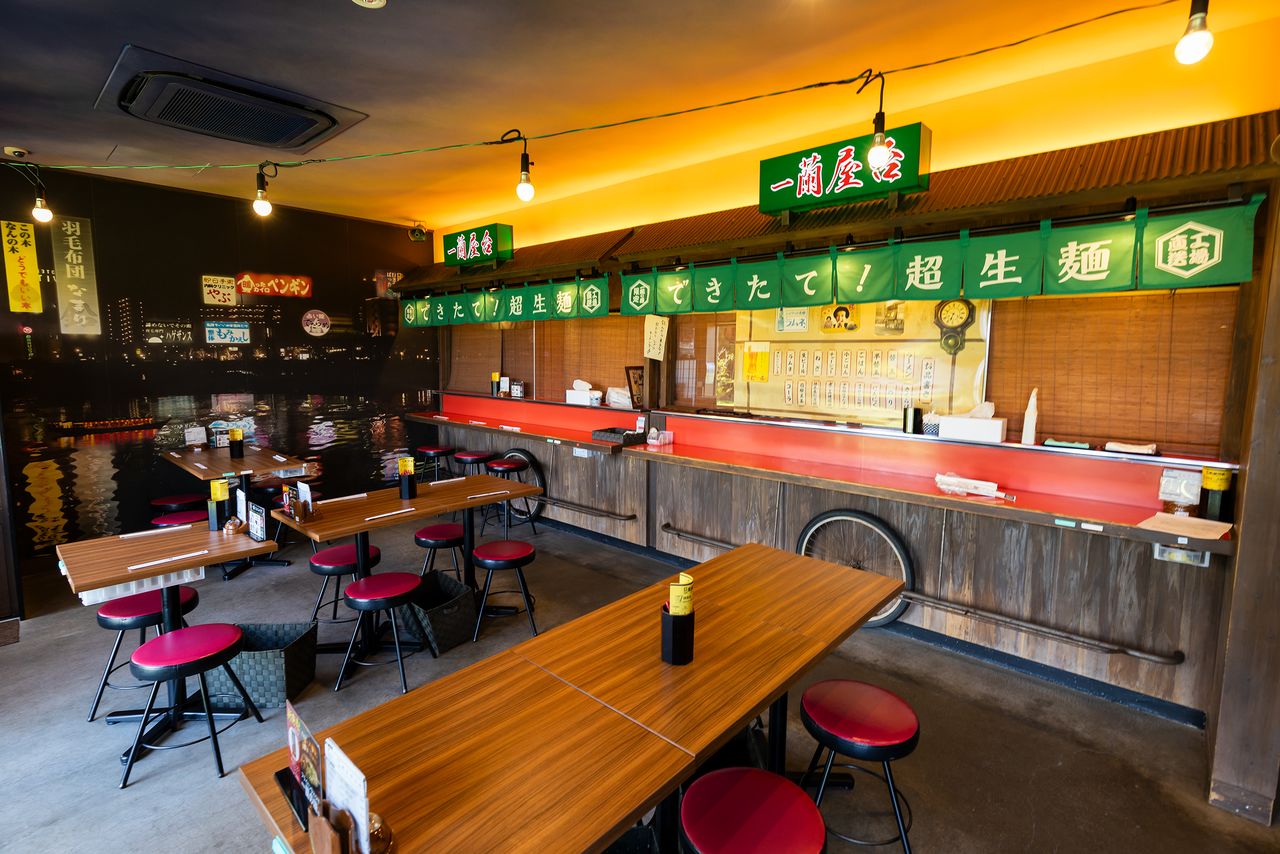
The Shōwa 30s shop is styled after a yatai street stall. (© Nippon.com)
The original spicy red sauce is made up of more than thirty seasonings added to a chili pepper base and left to mature for several days. The balanced spiciness and deep umami add a perfect accent to the easy slurping broth. Enjoying that flavor in the only place in the world where it is made is the ultimate experience for Ichiran fans.
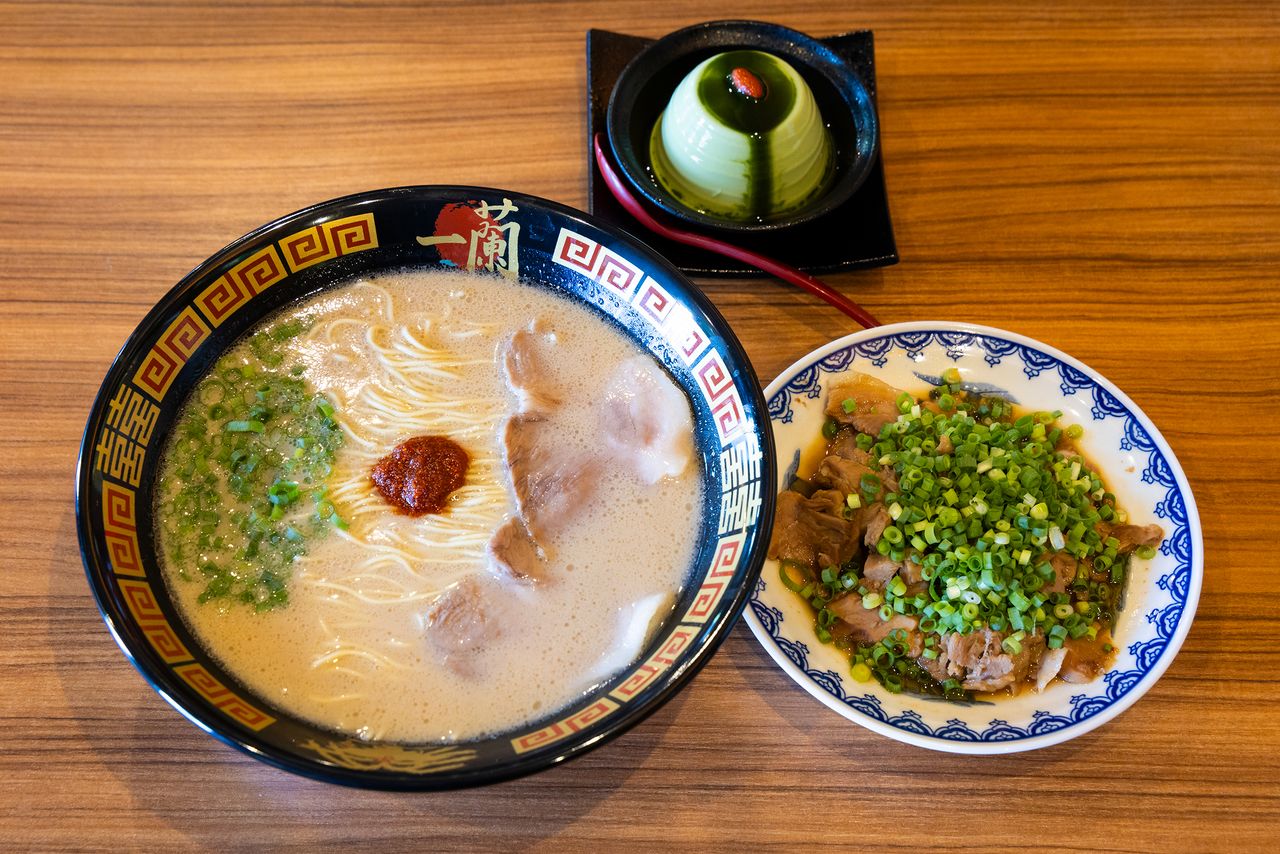
The standard Natural Tonkotsu Ramen, with the popular Smoke-Flavored Stewed Pork and Matcha Almond Pudding with Green Tea Sauce as a dessert. (© Nippon.com)
Once you’ve visited Ichiran no Mori and the main shop, the next pilgrimage stop should be the Nanokawa Hasshō no Mise in Fukuoka’s Minami-ku: the very first Ichiran. Ever since it opened in 1960, it has watched over the secrets to the flavor, given birth to new systems like the flavor-focus counter and written order systems, and seen the birth of a global chain. The origin of those years of innovation stands here, at Nanokawa, and no Ichiran pilgrimage would be complete without a visit.
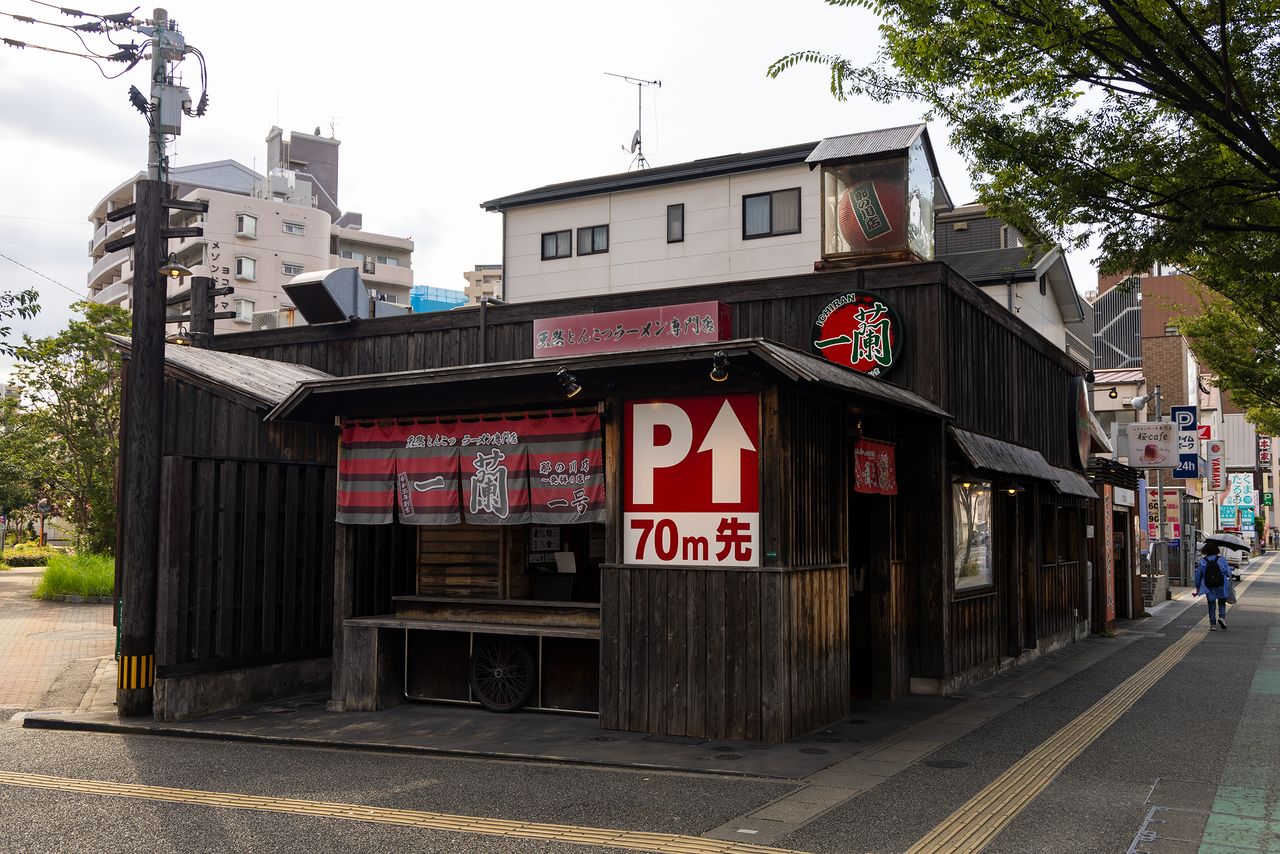
The Nanokawa branch is a rarity in that it offers a glimpse of the prep room through a window facing the sidewalk. (© Nippon.com)
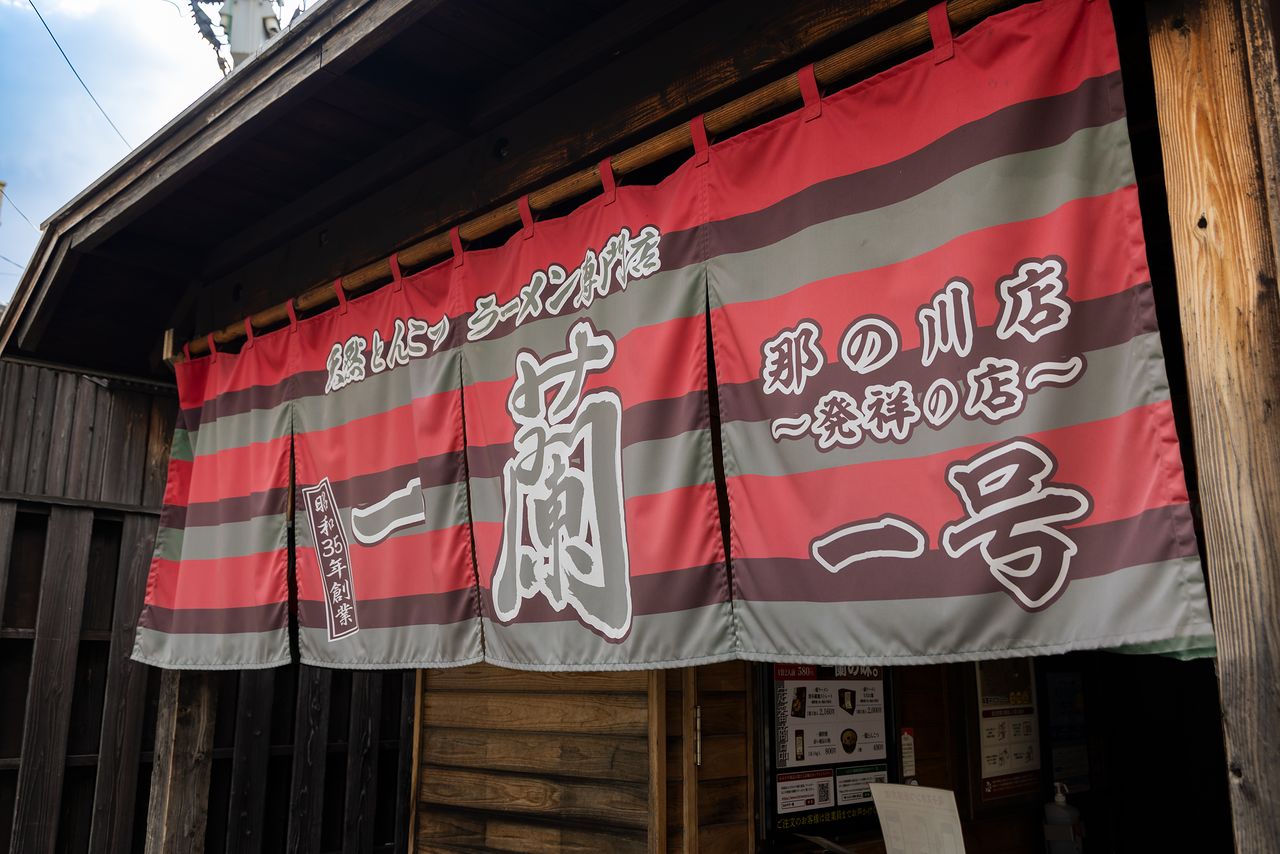
The noren curtain outside shows off its mark of pride: ichigō, marking this place as the first-ever outlet. (© Nippon.com)
Ichiran no Mori Itoshima
- Address: 256-10 Shima Matsuguma, Itoshima, Fukuoka Prefecture
- Hours: 10:00 am to 4:00 pm (Final orders at 3:45 pm)
- Open every day
- Fees: Tours and parking are free
(Originally published in Japanese. Reporting, text, and photos by Nippon.com. Banner photo: Ichiran focuses as much on presentation as on flavor in its tonkotsu ramen bowls.© Nippon.com.)
